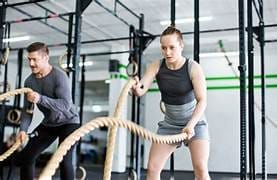Why Exercising is Important for Your Bones
April 4, 2025 2025-03-28 12:28
Why Exercising is Important for Your Bones
When we think about staying healthy, our minds often jump to cardiovascular health, muscle strength, or mental well-being. However, one crucial aspect that we sometimes overlook is the health of our bones. Our bones provide structure, protect vital organs, anchor muscles, and store calcium. Keeping them healthy is vital for overall well-being and mobility, particularly as we age.
Exercise plays a key role in strengthening bones, increasing bone density, and reducing the risk of fractures. In this article, we will explore why exercise is essential for bone health and how different types of exercises can benefit your bones throughout your life.
The Importance of Bone Health
Bones are not static structures; they are living tissues that constantly undergo remodeling—breaking down and rebuilding. This process is particularly important during childhood and adolescence when bones are growing rapidly. However, as we age, the rate of bone loss can outpace the rate of bone formation, leading to conditions such as osteoporosis, a condition where bones become weak and brittle.
Maintaining bone health is crucial for:
-
Preventing fractures: Strong bones are less likely to break under stress.
-
Maintaining mobility: Healthy bones enable us to move freely and perform everyday tasks.
-
Reducing the risk of osteoporosis: Regular exercise can help slow or prevent bone loss, particularly in postmenopausal women and older adults.
-
Supporting muscle function: Healthy bones provide the support for muscles to function properly.
Exercise is one of the most effective ways to stimulate bone growth and prevent bone loss, which is why it is important for people of all ages to engage in activities that promote bone health.
How Exercise Benefits Bone Health
1. Weight-Bearing Exercises Stimulate Bone Formation
The most effective type of exercise for bones is weight-bearing exercises. These exercises force you to work against gravity, which helps strengthen the bones by increasing bone density. When you engage in weight-bearing activities, the bones in your body experience small amounts of stress, and as a result, they respond by becoming stronger and denser.
Examples of weight-bearing exercises include:
-
Walking
-
Running
-
Hiking
-
Dancing
-
Jumping rope
-
Climbing stairs
These activities can help stimulate bone-building cells called osteoblasts, promoting stronger, healthier bones.
2. Resistance Training Increases Bone Mass
Resistance or strength training is another effective way to improve bone health. Lifting weights or using resistance bands puts pressure on your bones, promoting bone remodeling and the creation of new bone tissue. Unlike weight-bearing exercises, which mainly focus on the lower body, resistance training helps strengthen both upper and lower bones and muscles.
Examples of resistance training exercises include:
-
Weight lifting
-
Bodyweight exercises (e.g., squats, push-ups)
-
Resistance band exercises
-
Exercises on machines (e.g., leg press, chest press)
By increasing bone mass and stimulating bone remodeling, resistance training is especially important as we age. It helps counteract the natural decrease in bone density that occurs over time.
3. Improving Balance and Coordination Reduces Fall Risk
One of the most significant benefits of exercise, especially as we age, is the improvement of balance and coordination. Strong bones alone aren’t enough if you are at risk of falling and breaking them. Certain exercises, such as tai chi, yoga, and balance training, help improve posture, balance, and flexibility, which can prevent falls and reduce the risk of fractures.
Balance exercises include:
-
Tai Chi: Known for its slow, flowing movements, Tai Chi is an excellent way to improve balance and coordination.
-
Yoga: Many yoga poses help improve flexibility and stability, which can reduce the likelihood of falls.
-
Balance exercises: Standing on one leg, using balance boards, or performing exercises like heel-to-toe walking can improve overall stability.
These exercises are essential for elderly individuals or anyone with a history of falls or poor balance. They help maintain both strength and agility, contributing to healthier bones and a lower risk of fractures.
4. Flexibility and Mobility Training Keep Bones Healthy
In addition to strengthening exercises, maintaining flexibility and joint mobility is vital for bone health. Stretching exercises can help reduce stiffness and maintain joint health, preventing injuries and improving the range of motion. This is particularly important for the spine, hips, and knees, which are key areas that bear a significant amount of weight.
Stretching and mobility exercises include:
-
Dynamic stretching (e.g., leg swings, arm circles)
-
Static stretching (e.g., hamstring stretches, quadriceps stretches)
-
Yoga poses that enhance flexibility and mobility (e.g., child’s pose, downward dog)
A regular flexibility routine keeps the muscles around the bones limber, enhancing mobility and reducing the risk of muscle strain and joint injury.
5. Bone Health Across the Lifespan
Bone health begins in childhood and continues throughout life. During childhood and adolescence, bones are growing rapidly, and it’s important to engage in activities that build bone density. In particular, weight-bearing exercises and strength training help children and teens develop strong bones that will serve them well into adulthood.
As we enter adulthood and especially after menopause or in older age, bones can begin to lose mass at a faster rate. Therefore, it’s crucial to maintain an active lifestyle with regular exercise to preserve bone health and prevent conditions like osteoporosis and osteopenia (a precursor to osteoporosis).
6. Diet and Bone Health
While exercise plays a pivotal role in bone health, it’s important to remember that nutrition also plays a major role. Consuming a diet rich in calcium, vitamin D, and magnesium helps support bone density and strength. Adequate protein intake also contributes to healthy bones by helping the body produce collagen, a key protein that gives bones their structure.
Exercise and a well-balanced diet work together to promote optimal bone health and help prevent bone-related diseases as you age.
Conclusion
Exercise is one of the most effective ways to ensure healthy bones throughout life. Weight-bearing exercises, resistance training, and balance and flexibility activities all contribute to stronger, denser bones, and they can help prevent fractures and conditions like osteoporosis.
For children, adults, and seniors alike, incorporating a variety of exercises that focus on strengthening, flexibility, and balance can lead to long-term bone health benefits. Remember, bone health doesn’t only rely on genetics—lifestyle choices, such as maintaining an active lifestyle and eating a nutritious diet, can have a significant impact on your bone strength and overall well-being.
Stay active, stay strong, and protect your bones for a lifetime of mobility and independence!
Related Posts
Why Exercising is Important for Your Bones
April 4, 2025 2025-03-28 12:28Popular Tags






























